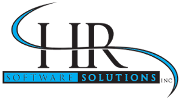Welcome to our exploration of project management! Today, we’re setting out to uncover the distinct differences between enterprise and traditional project management. As the business world evolves, professionals must understand these differences. Whether you’re a seasoned project manager, a curious beginner, or just someone interested in the field, this post aims to clarify and enlighten you. Let’s start this informative journey together and discover what sets these two approaches apart in the world of project management.
Scope and Scale – The Defining Features
In project management enterprise, scale and scope stand out as the primary differentiators. Unlike traditional project management, which often focuses on singular, smaller projects, enterprise project management (EPM) handles a complex array of multiple, interconnected projects. This complexity demands a strategic approach that focuses not just on completing individual projects, but also on aligning each project with the broader organizational goals.
In traditional project management, the focus remains more localized. Project managers handle projects individually, concentrating on meeting specific objectives within set budgets and timeframes. This approach works well for smaller operations but might not capture the bigger picture necessary in an enterprise setting, where the interdependence of projects is crucial.
Tools and Technologies – A Shift in Dynamics
Project management enterprise scenarios typically use more advanced, integrated tools compared to traditional project management. Enterprise project management involves sophisticated software solutions that offer a comprehensive view of all projects, resources, and outcomes. These tools handle complex data, provide advanced analytics, and facilitate cross-departmental communication.
Conversely, traditional project management often relies on simpler tools and techniques, focusing on tracking individual projects, sometimes using basic software or even manual methods. While effective for managing single projects, these tools may lack the capabilities to offer insights into larger organizational strategies or to manage resources across multiple projects.
Strategic Alignment and Organizational Impact
Strategic alignment is central to a project management enterprise. Here, the organization views every project as part of a larger strategy, contributing to the overall mission and goals. This approach ensures that projects don’t operate in isolation but align with the business’s long-term objectives. Decision-making in EPM often involves senior management and stakeholders, ensuring each project aligns with the organizational strategy.
In traditional project management, projects usually run more independently, focusing on immediate goals without always considering the broader organizational impact. This approach can offer quick decision-making and flexibility, but it might not align with the larger business strategy. For more details visit us at https://hrssolutions.com/.
Risk Management – A Broader Perspective
In project management enterprise, risk management takes a wider view. Enterprise project management involves identifying, assessing, and mitigating risks across all projects within the organization. This comprehensive approach to risk management is crucial, as risks in one project can impact others and affect the organization’s overall health. EPM requires a proactive, strategic approach to risk management, often using specialized tools and methodologies to monitor risks across projects.
In traditional project management, risk management typically focuses on a single project. Project managers identify and mitigate risks that could impact their specific projects. While effective for the project’s scope, this approach might overlook broader organizational risks or opportunities for managing risks across projects.
Leadership and Team Dynamics
Leadership in a project management enterprise requires a mix of strategic vision and the ability to oversee multiple teams and projects. Enterprise project managers must understand the organization’s broader goals and effectively communicate these to their teams. They lead not just with authority but also with a vision that aligns their teams with the organization’s strategic objectives.
In traditional project management, leadership tends to focus more on the tactical aspects of managing a single project. Project managers are more hands-on, dealing with day-to-day management, problem-solving, and team coordination. These skills are essential in enterprise project management but are complemented by strategic thinking and navigating complex organizational structures.
Flexibility and Adaptability
Flexibility and adaptability are key in a project management enterprise. The scale and complexity of managing multiple interrelated projects demand the ability to quickly adapt to changes and realign projects with organizational goals. This agility is crucial in today’s fast-paced business environment, where market trends and organizational needs can change rapidly.
In traditional project management, flexibility is important, but the scope for adaptability often remains limited to the individual project. Changes are typically easier to implement, as they do not have the cascading effects seen in enterprise project management.
Conclusion
Understanding the differences between enterprise and traditional project management is crucial for organizations and professionals in modern business environments. Enterprise project management offers a strategic, comprehensive view, aligning multiple projects with organizational goals, whereas traditional project management focuses on individual project success. As the business world continues to evolve, mastering these two forms of project management becomes key to success and maintaining a competitive edge.
This comparison of project management enterprise versus traditional project management underscores the importance of context in project management practices. Whether managing a single project or overseeing a portfolio, the key is to remain agile, strategic, and aligned with your organization’s objectives.
Read More:
HR Project Management Guide
HRSS can help you transition your company’s HR department into an efficient, reliable, functioning unit
Related Posts

Strategic Workforce Planning with Workday

Innovative Strategies in Workday Solutions
About Us

With HR Software Solutions as your partner throughout the involved HR system implementation process, all of your needs will be met.